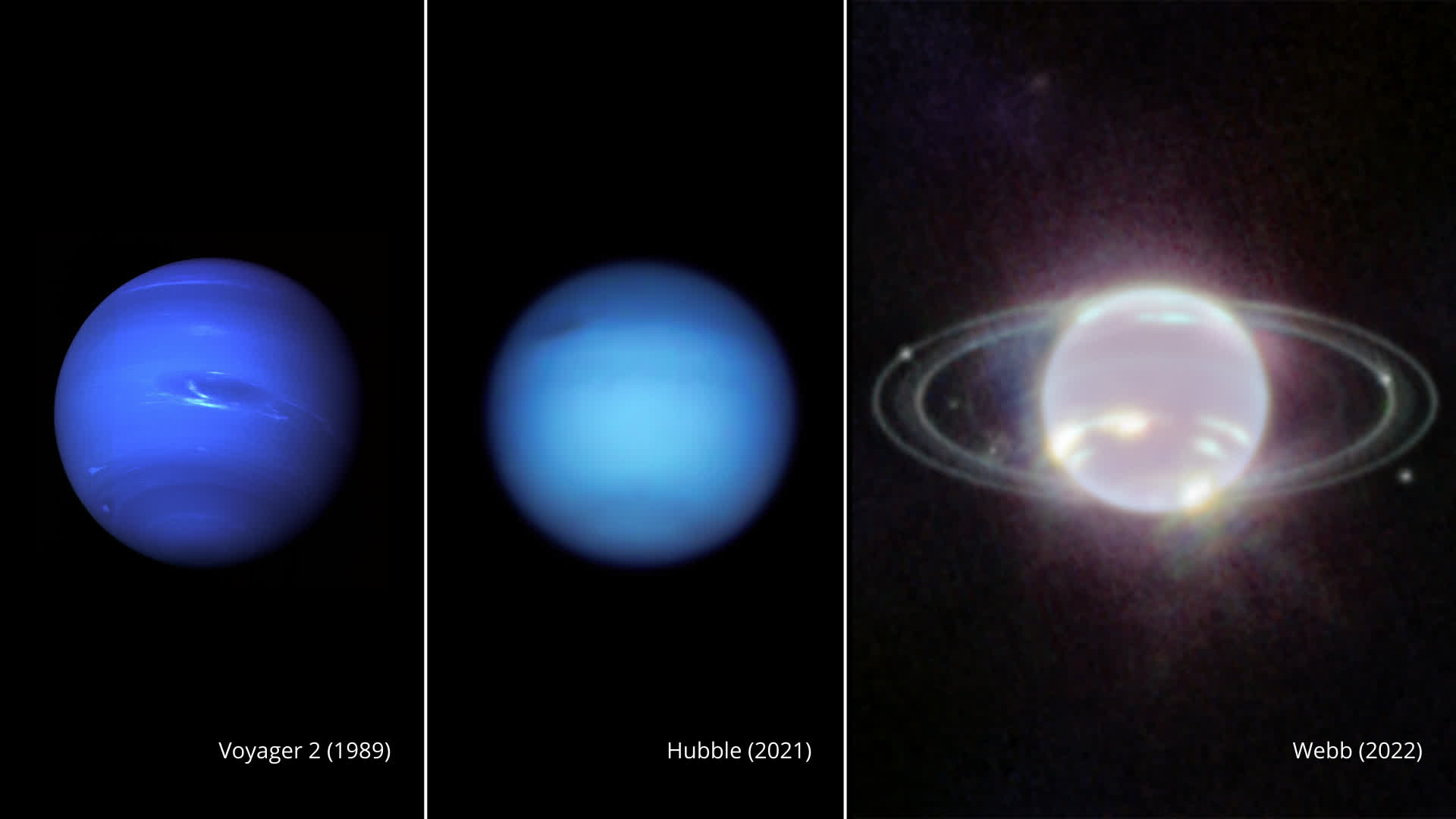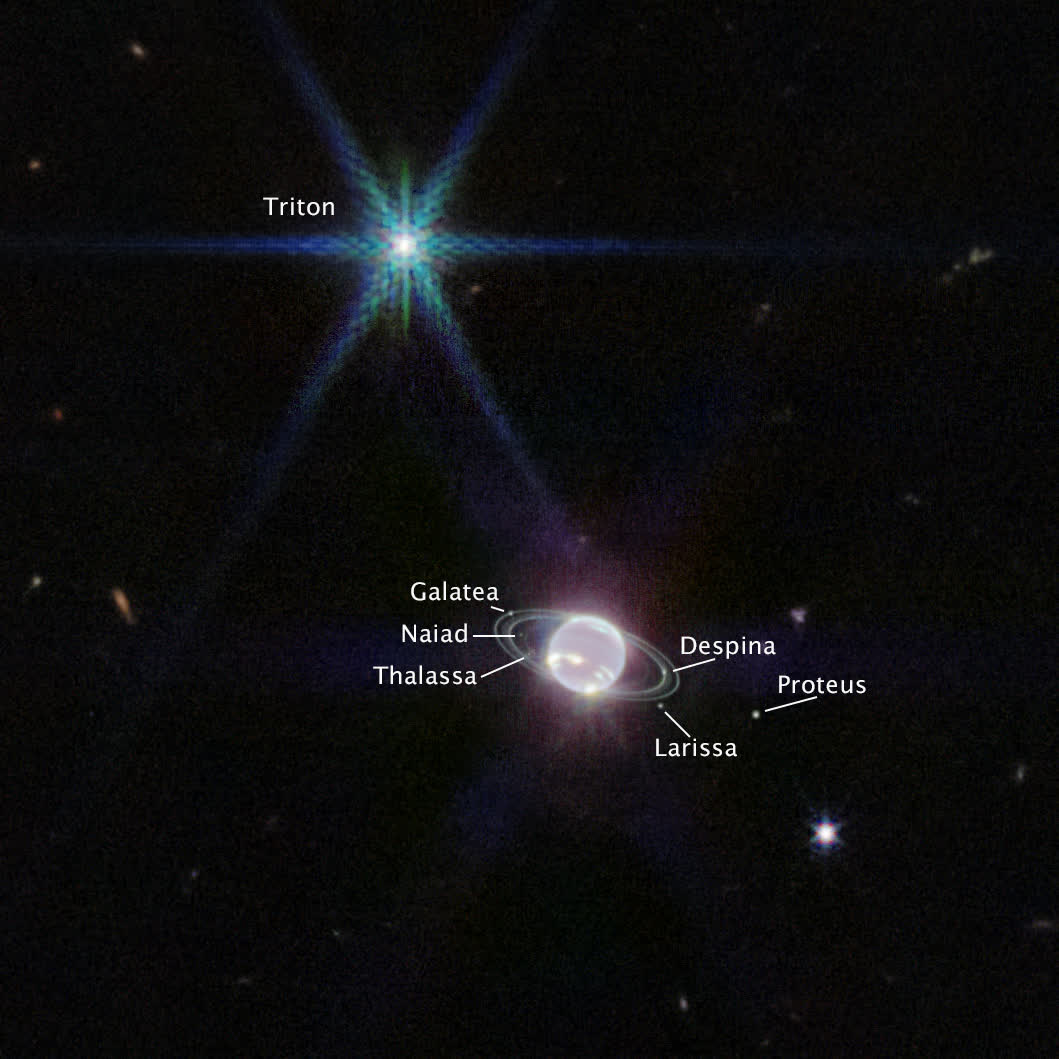In a nutshell: NASA has shared another image from the James Webb Space Telescope of a target in our own backyard. On Wednesday, the space agency published an image of Neptune captured using Webb's Near-Infrared Camera (NIRCam). The ice giant, which was first discovered in 1846, resides in the outer solar system and is roughly 30 times farther from the Sun than Earth. The Sun is so small at that distance that if observed at high noon from Neptune, it'd look like a dim twilight.
Webb's image provided the clearest view of the planet's dusty rings in more than 30 years. NASA said some of the rings have not been detected since Voyager 2's rendezvous with Neptune in 1989. It is also the first time they have been imaged in infrared.
Neptune is one of four planets in our solar system with rings, the others being Saturn, Uranus and Jupiter. A Webb image shared last month highlighted the faint rings of Jupiter along with its auroras and tiny moons.
Speaking of moons, Webb's view of Neptune also included seven of the planet's 14 known satellites. Triton, a large and unusual moon covered in a frozen sheen of condensed nitrogen, shines bright in the image as it reflects about 70 percent of sunlight that hits it. The moon also exhibits Webb's signature diffraction spikes.
In visible light, Neptune is blue due to the methane gas in its atmosphere. With Webb's NIRCam, the planet does not appear blue but rather, is quite dark except where high-altitude clouds are present. These methane-ice clouds show up as bright spots and streaks, reflecting sunlight before it is absorbed by the gas.
The zoomed-out view of Neptune shows it as a small glowing ball among a sea of other celestial objects and really puts into perspective just how vast the universe is.
NASA's Voyager 2 probe launched in 1977 and is still in commission. It entered interstellar space in 2018 and as of yesterday, has traveled roughly 12.175 billion miles since its departure.
https://www.techspot.com/news/96055-james-webb-telescope-captures-clearest-image-neptune-rings.html


